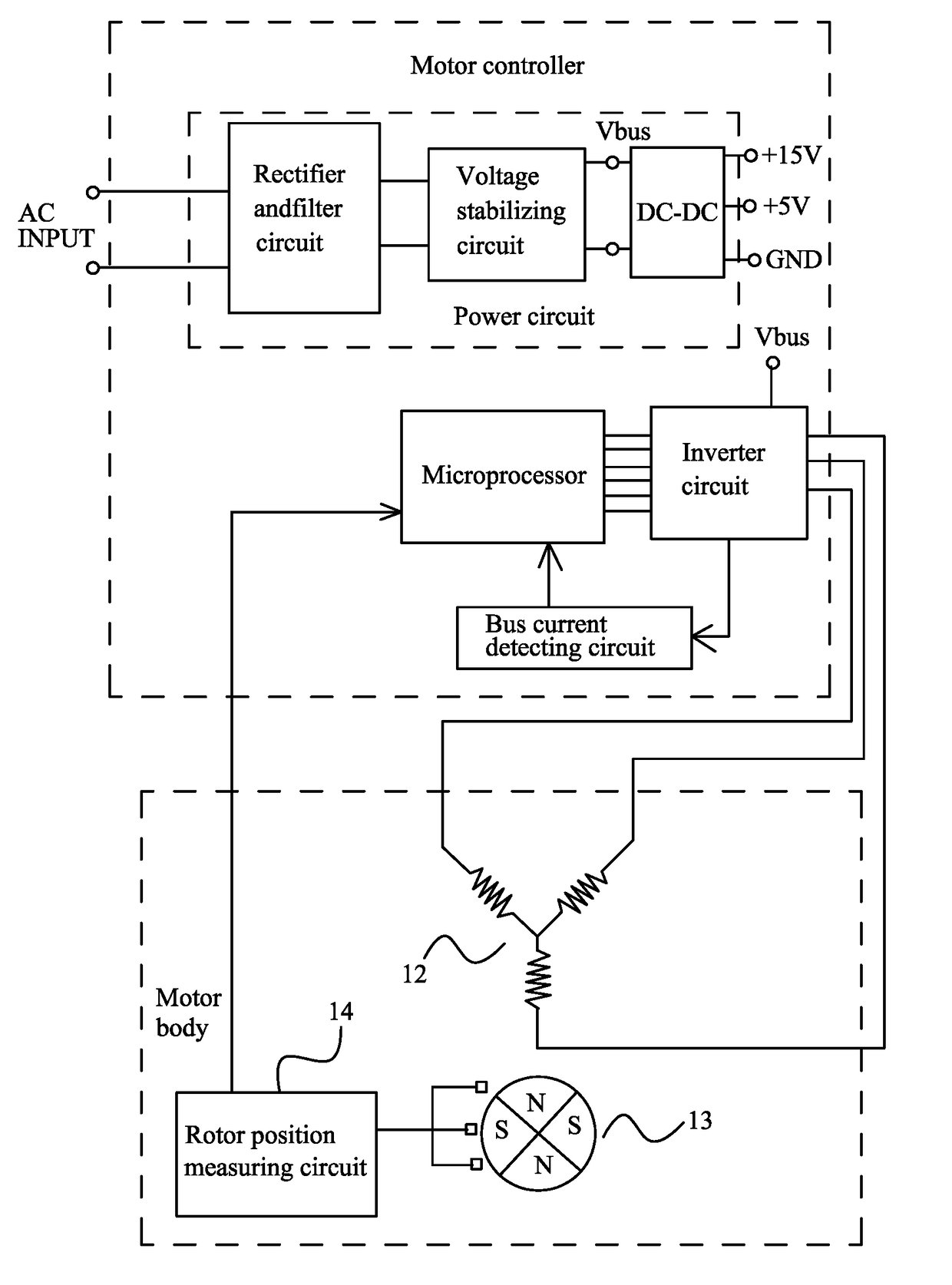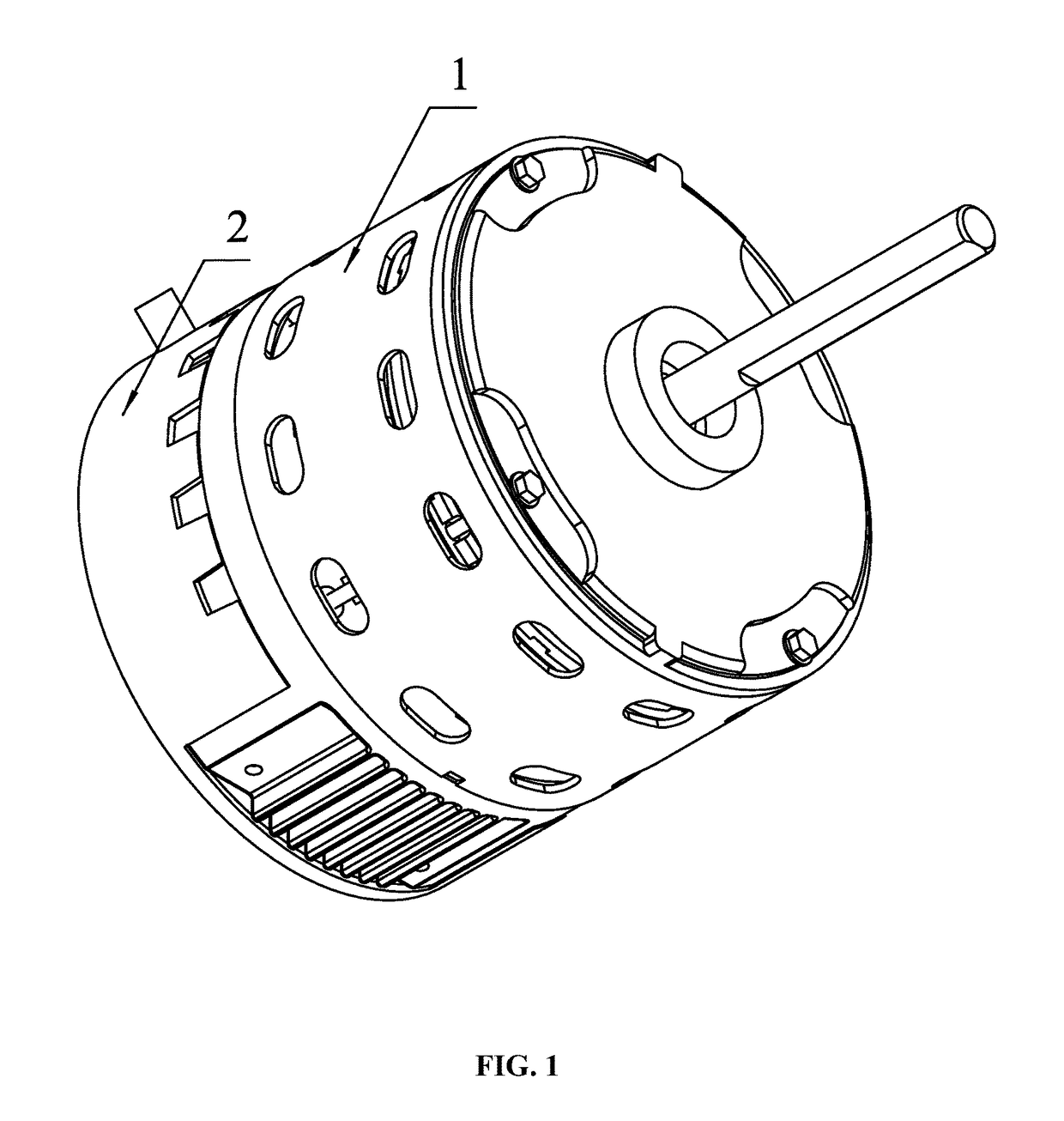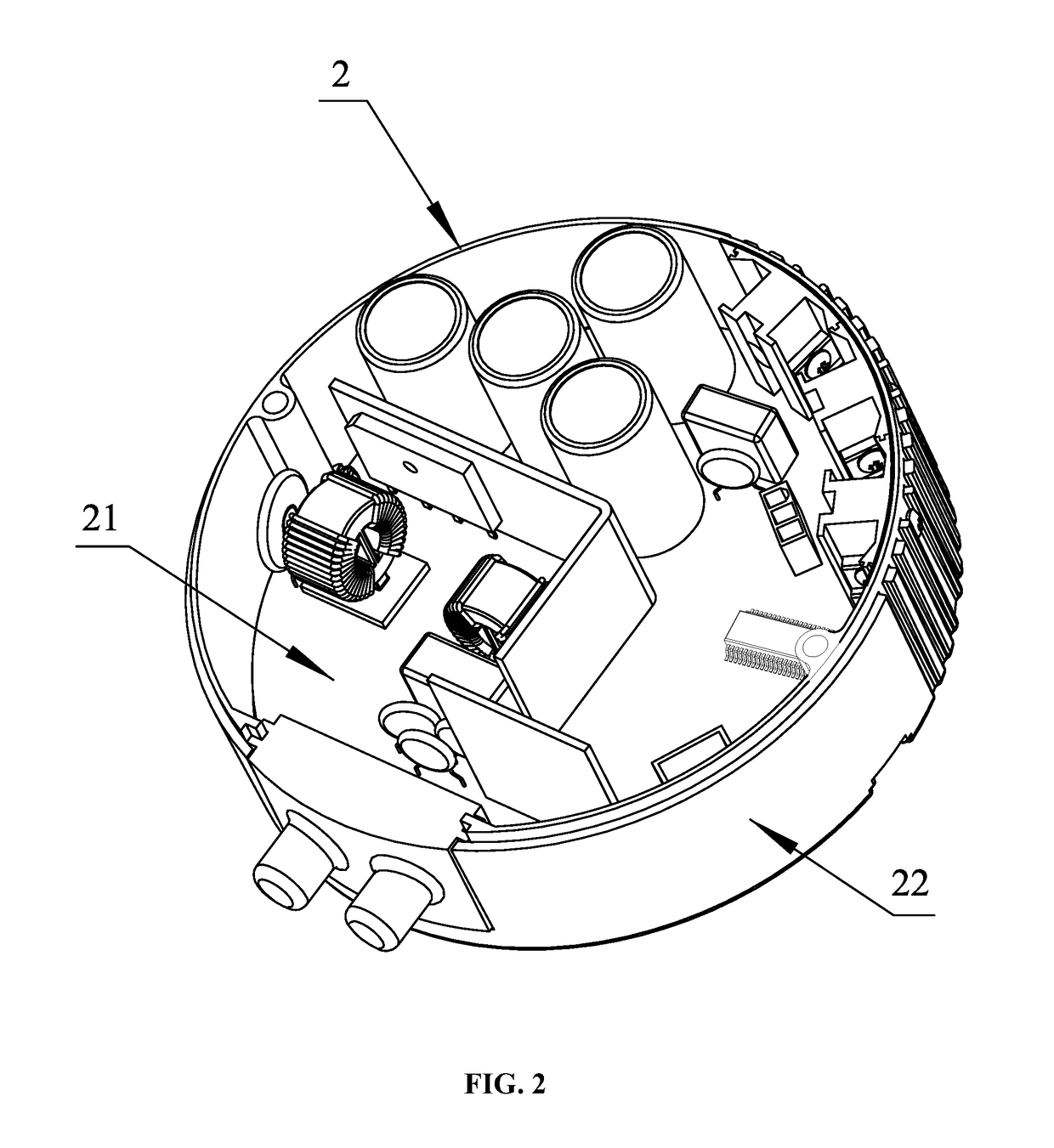Method for acquiring constant torque of electronically commutated motors
a technology of electronic commutation and constant torque, which is applied in the direction of electronic commutators, electronic commutation motor control, dc motor speed/torque control, etc., can solve the problems of high requirements, complicated mathematical models, and troublesome arithmetic, and achieve simple mathematical models and reduced pwm signal output by the microprocessor. , the effect of simple mathematical model
- Summary
- Abstract
- Description
- Claims
- Application Information
AI Technical Summary
Benefits of technology
Problems solved by technology
Method used
Image
Examples
Embodiment Construction
[0029]For further illustrating the invention, experiments detailing a method for acquiring a constant torque of an ECM are described below. It should be noted that the following examples are intended to describe and not to limit the invention.
[0030]As shown in FIGS. 1-3, an ECM generally comprises a motor controller 2 and a motor body 1. The motor body 1 comprises: a stator assembly 12, a rotor assembly 13, and a housing assembly 11. The stator assembly 13 is installed on the housing assembly 11. A Hall sensor 14 is installed on the motor body 1 for detecting a rotor position. The rotor assembly 13 is nested inside or outside the stator assembly 12. The motor controller 2 comprises a control box 22 and a control circuit board 21 installed inside the control box 22. The control circuit board 21 generally comprises: a power supply circuit, a microprocessor, a bus current detecting circuit, an inverter circuit, and a rotor position measuring circuit 14 (i.e., the Hall sensor). A power ...
PUM
 Login to View More
Login to View More Abstract
Description
Claims
Application Information
 Login to View More
Login to View More - R&D
- Intellectual Property
- Life Sciences
- Materials
- Tech Scout
- Unparalleled Data Quality
- Higher Quality Content
- 60% Fewer Hallucinations
Browse by: Latest US Patents, China's latest patents, Technical Efficacy Thesaurus, Application Domain, Technology Topic, Popular Technical Reports.
© 2025 PatSnap. All rights reserved.Legal|Privacy policy|Modern Slavery Act Transparency Statement|Sitemap|About US| Contact US: help@patsnap.com



